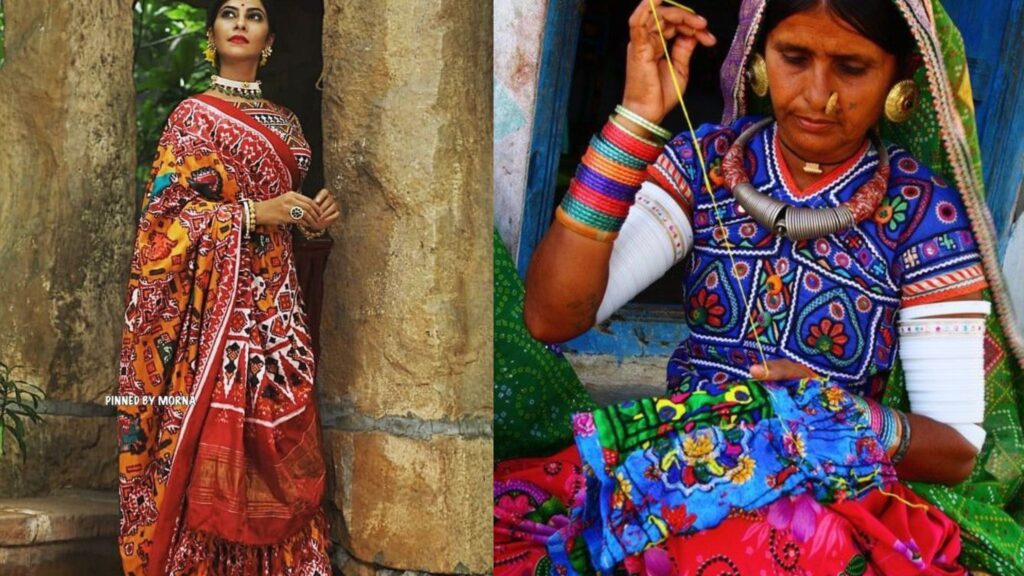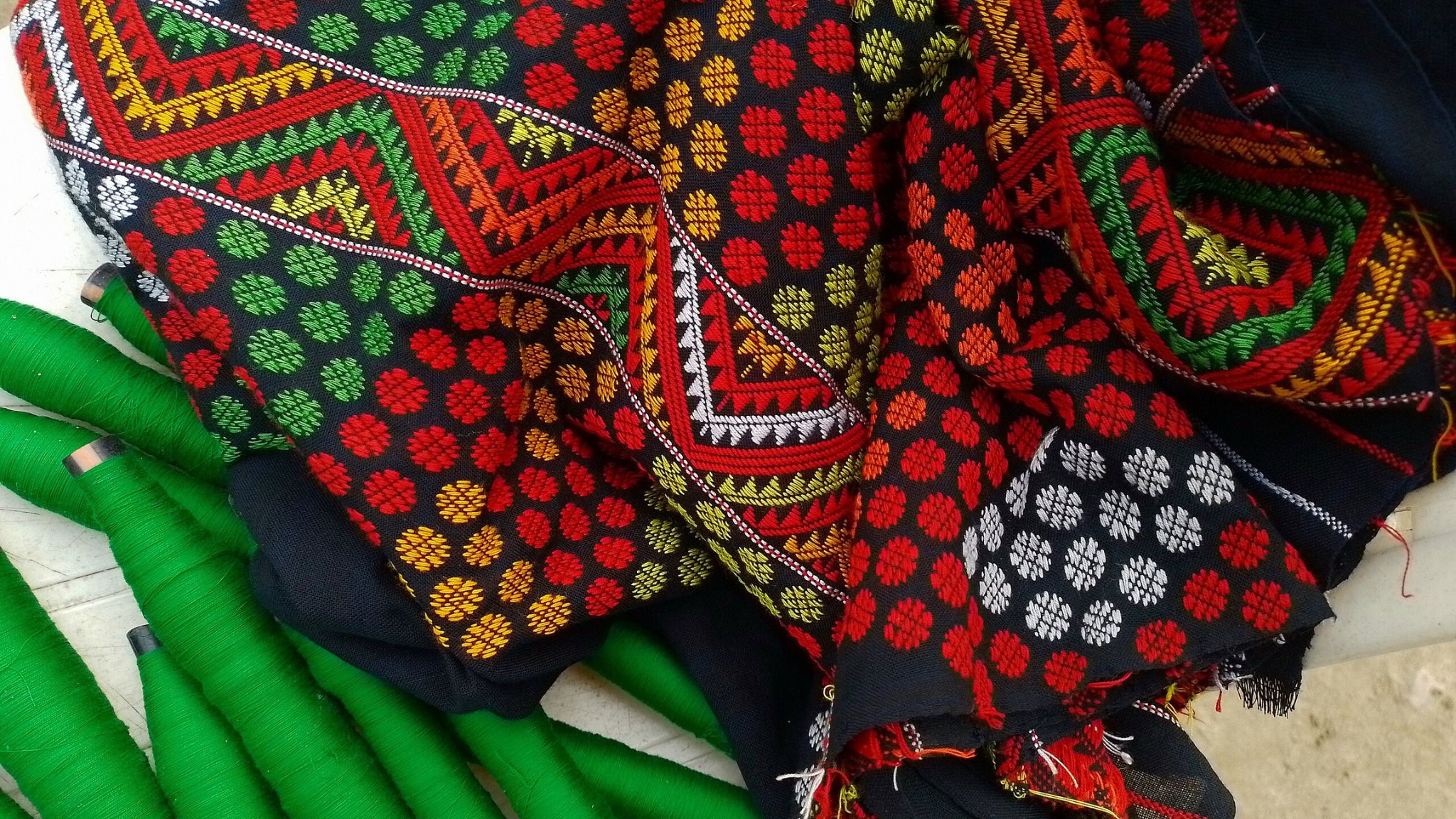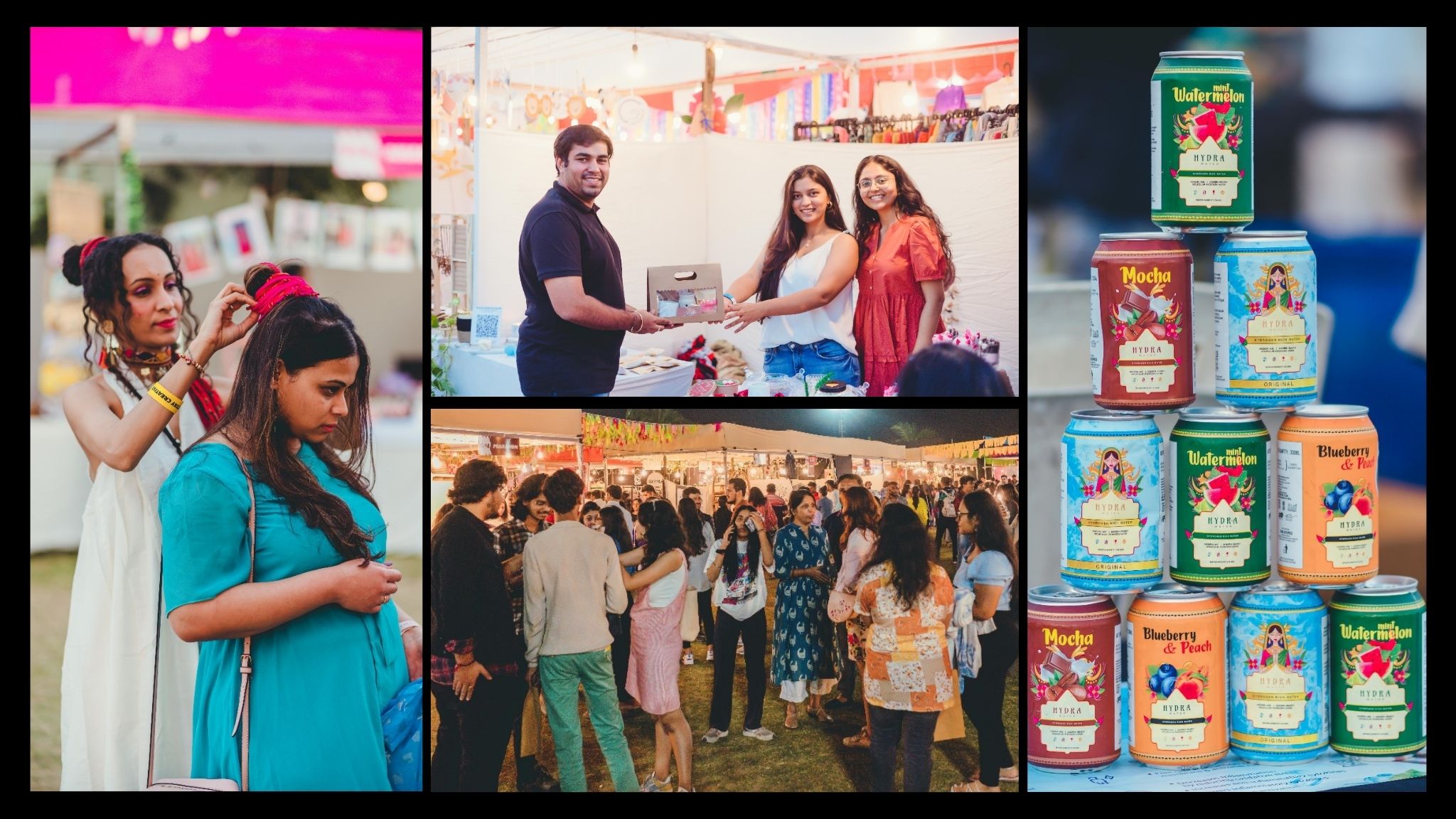In the dusty stillness of a Kutch morning, a loom hums like an old prayer. The artisan’s fingers—stained with indigo, cracked with legacy—move not just with skill, but memory. This is not just labor ; This is lineage. It is the inspiration that has long powered generations of Gujarati entrepreneurs and crafts people, turning tradition into timeless trade.
And yet, outside the loom-house, the world blurs by in clicks, scrolls, and sales. Trends change weekly. Outfits are algorithm-approved. And heritage? Heritage, increasingly, is reduced to a Pinterest aesthetic.
This is the quiet crisis no one’s posting about. Gujarat, once the beating heart of India’s textile legacy, is bleeding slowly at its seams.
A Legacy Spun Over Centuries
This isn’t new. Gujarat has always been a land of stories stitched into fabric.

From the looms of the Indus Valley to the courts of the Mughals, from Bandhani that mirrored monsoon skies to the double ikat Patola that traveled royal trade routes, Gujarat’s textiles have told tales long before the world turned digital.
They weren’t called “designs” back then. They were identities. Symbols. Sacred.
And yet now, this legacy risks being reduced to mere aesthetics—a filter, not a fact. A moodboard curated by someone with no memory of the mud, the dye, the devotion.
But ask any Gujarati artisan and they’ll tell you: this isn’t about the past. It’s about a future worth fighting for. One where every entrepreneur, startup, and design student in Gujarat carries craft forward, not just as a business, but as inspiration.
What Happens When Hands Are Replaced by Machines?
Let’s be honest: modernity isn’t the villain. But unexamined progress often is.
Factories can mass-produce what once took weeks to handcraft. Cheaper “handmade” knock-offs flood markets. The nuance? Lost. The labor? Invisible. The artisan? Forgotten.
But the threat isn’t just mechanical. It’s generational.
With fewer avenues for sustainable income, younger weavers are walking away from ancestral looms. Not because they don’t care, but because they can’t afford to.
We’re not just losing technique. We’re watching a slow fade-out of tradition, community, and identity. And it’s happening without headlines.
This is more than a creative loss. It’s a cultural amputation. And if we don’t speak up, the silence will finish what the markets started.
Thread Count: Handloom vs High Fashion
In a world obsessed with speed and scale, this quiet table reveals a loud truth: craft and care are being priced out of the conversation.

And while artisans wait weeks for one saree to dry under the desert sun, high fashion delivers mass-produced garments overnight—churning out collections faster than culture can catch up.
High Fashion Borrows. But Who Gives Credit?
Here’s the uncomfortable truth: the very motifs once born in Bhuj or Patan are now being repackaged by luxury brands, rarely with a name, rarely with a nod.
Fashion loves craft. But it often forgets the craftspeople.
Heritage becomes a moodboard. Craft becomes a commodity. What was once sacred becomes seasonal.
It’s not a question of nostalgia. It’s a question of justice.
Because every time we choose speed over soul, we make it harder for heritage to survive.
But Not Everyone Has Moved On
While many walk away, some stand their ground—loom in hand, heart wide open.
- The Salvi family still protects the secrets of Patola weaving, refusing to simplify or speed up centuries-old processes.
- Khamir in Bhuj creates platforms for Ajrakh and Bhujodi artisans to collaborate, innovate, and thrive.
- Okhai empowers rural women to turn their stitches into sustenance, proving that handmade can also mean economically empowered.
- Design Gaatha – Ahmedabad-based design studio working with Gujarat’s craft communities to reimagine tradition through thoughtful storytelling and collaboration.
- SEWA Bharat creates income opportunities and dignity for grassroots women through craft clusters that prioritize people over profit.
These aren’t just craft hubs. They’re cultural uprisings disguised as design studios—where tradition refuses to be forgotten.
They remind us that Gujarati dhandho was never just about profit—it was always about purpose. And in their threads lies the inspiration for a new generation of conscious entrepreneurs.
So, What Can We Do?
Empathy without action is just performance. Let’s wear our values—not just on our sleeves, but in every stitch we choose.
Support slow fashion, even when it asks you to wait, to pay more, to pause. That pause? It sustains livelihoods and slows down the extinction of tradition. It means your garment carries memory, not just marketing.
Credit the artisan the way you would a designer. Without their hands, there’s no masterpiece—only machinery.
Ask better questions. Where was it made? By whom? How were they treated? If the answer is vague, the impact likely is too.
Share the stories, not just the selfies. A pattern is not just a print—it’s a language, a lineage, a legacy.
And perhaps most importantly—pass it on. Teach younger generations to treasure craft. Talk about it. Post about it. Archive it in culture before it’s archived in textbooks.
Because we can’t protect what we never learned to value. And we can’t fix what we refuse to name.
The Final Thread

This isn’t just about Gujarat. It’s about every culture fighting to hold its ground in a world chasing speed and sparkle. These crafts aren’t relics. They’re resistance. They deserve dignity, not just display.
Because if we forget the hands behind the hem, we lose more than a textile.
“But we still have time to choose better. To buy with heart. To remember.”
At Gujpreneur, we believe in spotlighting stories that stitch heritage with hope. Know a craftsperson, collective, or movement we should cover? Reach out. Let’s thread the future together.







